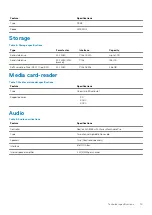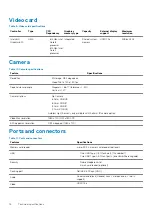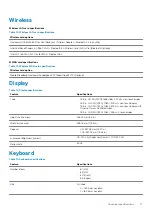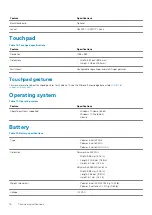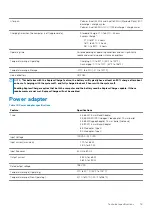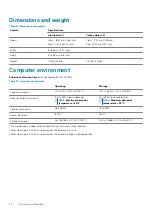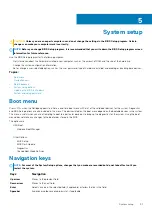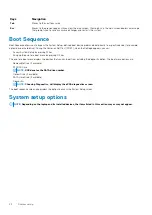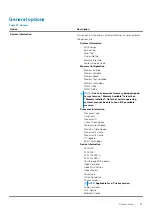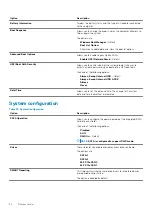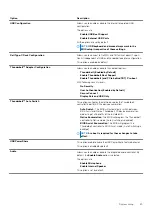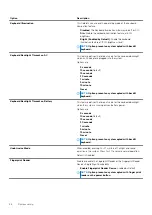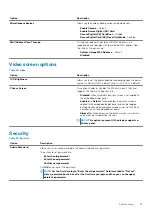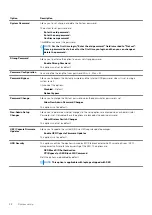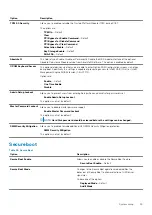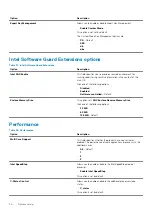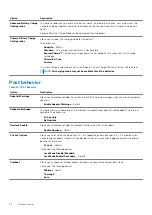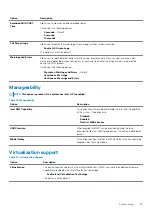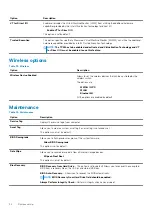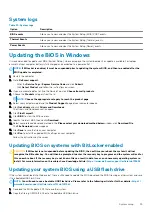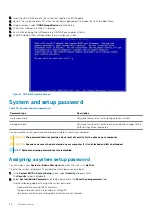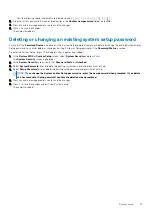
Option
Description
TPM 2.0 Security
Allows you to enable or disable the Trusted Platform Module (TPM) during POST.
The options are:
•
TPM On
—Default
•
Clear
•
PPI Bypass for Enable Command
—Default
•
PPI Bypass for Disbale Command
•
PPI Bypass for Clear Command
•
Attestation Enable
—Default
•
Key Storage Enable
—Default
•
SHA-256
—Default
Absolute®
This field lets you Enable, Disable, or Permanently Disable the BIOS module interface of the optional
Absolute Persistence Module service from Absolute® Software. This option is enabled by default.
OROM Keyboard Access
This option determines whether users are able to enter Option ROM Configuration screens via hotkey
during boot. Specifically this settings is capable of preventing access to Intel® RAID(Ctrl+I) or Intel®
Management Engine BIOS Extension (Ctrl+P/F12).
Options are:
•
Enable
— Default
•
One Time Enable
•
Disable
Admin Setup Lockout
Allows you to prevent users from entering Setup when an administrator password is set.
•
Enable Admin Setup Lockout
This option is not set by default.
Master Password Lockout
Allows you to disable master password support.
•
Enable Master Password Lockout
This option is not set by default.
NOTE:
Hard Disk password should be cleared before the settings can be changed.
SMM Security Mitigation
Allows you to enable or disable additional UEFI SMM Security Mitigation protection.
•
SMM Security Mitigation
This option is not set by default.
Secure boot
Table 26. Secure Boot
Option
Description
Secure Boot Enable
Allows you to enable or disable the Secure Boot Feature.
•
Secure Boot Enable
—Default
Secure Boot Mode
Changes to the Secure Boot operation mode modifies the
behaviour of Secure Boot to allow evaluation of UEFI driver
signatures.
Choose one of the option:
•
Deployed Mode
—Default
•
Audit Mode
System setup
29

